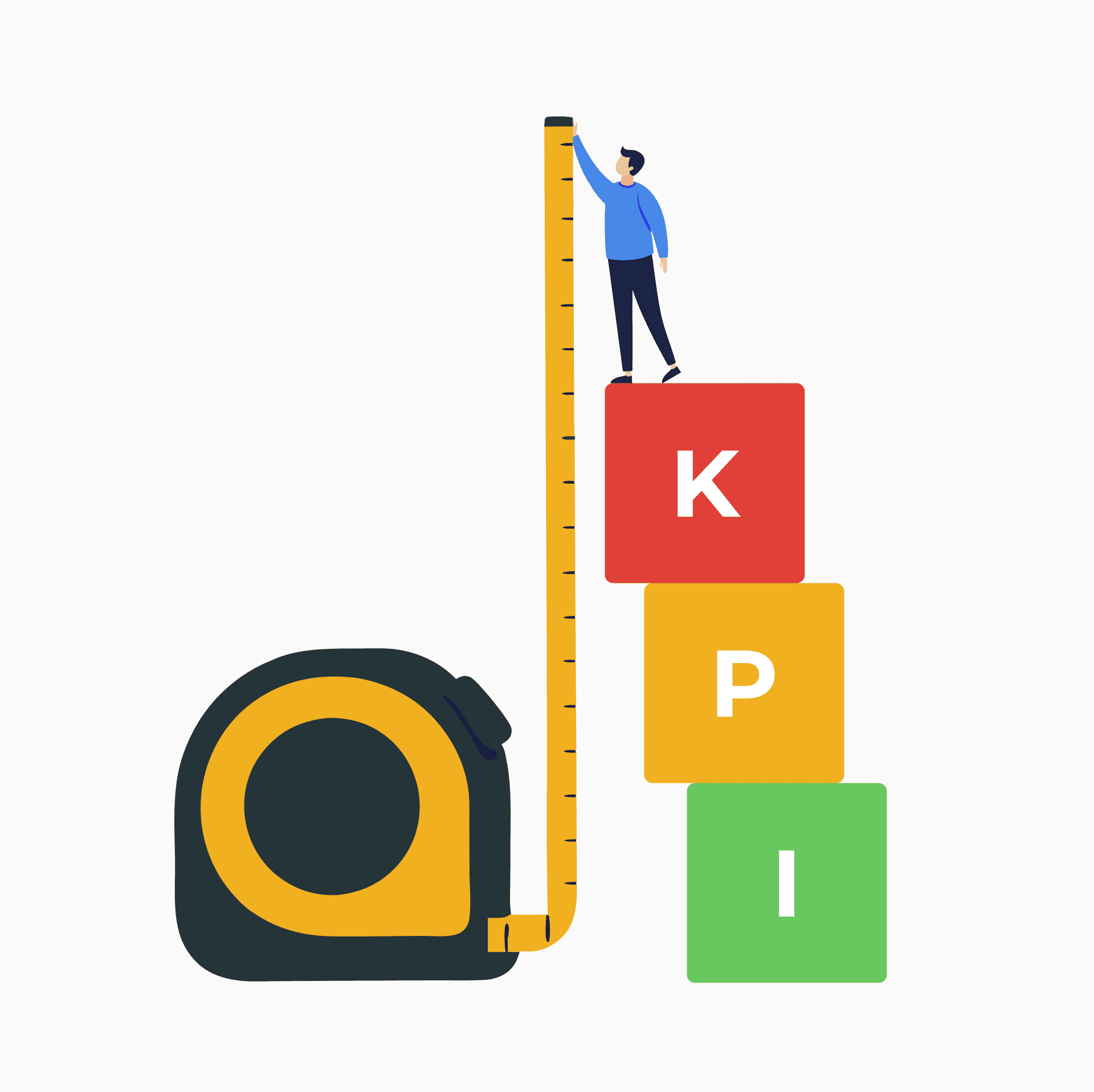Strategy Without Bureaucracy: Planning for Real Results
Why do so many strategies remain stuck on paper? Leaders often rely on vague statements, making it hard for teams to understand how to turn ideas into action. In fact, studies show that 60–90% of strategic plans never get implemented due to a lack of clear, practical planning.
As Brian Tracy, renowned personal and business development expert, aptly puts it: “Every minute you spend in planning saves ten minutes in execution”.
And it’s true—structured, precise planning turns a strategy into concrete actions that drive success.
How to Define Goals and Success Criteria
Effective planning always starts with clearly defined goals. One of the most popular methods is SMART (Specific, Measurable, Achievable, Relevant, Time-bound). This approach eliminates vagueness by setting goals that are concrete, measurable, realistic, aligned with the strategy, and time-bound.
For instance, instead of a broad goal like “increase sales”, a SMART goal would be: “Increase sales of product X by 20% in region Y over the next 3 months through online advertising and SEO optimization”.

To track progress effectively, you can use Key Performance Indicators (KPIs).
KPIs are measurable metrics that evaluate the success of a project. They help monitor goal achievement and adjust the strategy when needed.
Examples of KPIs:
- Number of new clients acquired per week
- Percentage of completed project tasks per month
- Profit from a new product per quarter
As Peter Drucker famously said, “If you can’t measure it, you can’t improve it”.
A great example of structured strategic planning comes from robota.ua, led by Valerii Reshetnyak. At this company, strategic planning is a collaborative effort involving the entire management team, who jointly develop and update long-term growth directions.
The process includes in-depth market analysis (using the PESTLE framework), development of multiple business scenarios, and creation of project “passports”—detailed outlines with goals, stages, resources, and risk assessments.
Thanks to this structured approach, the team builds a relevant project roadmap each year, enabling more efficient strategy execution and faster adaptation to changes and current market realities.

Breaking Down Strategy Into Actionable Tasks
To ensure your strategy doesn’t remain just an abstract idea, it must be broken down into specific, manageable tasks. An effective way to do this is by using the Work Breakdown Structure (WBS) method—it helps clearly define what needs to be done, who is responsible, when results are expected, and what those results should look like.
For example, a strategic goal like “launch a new product” can be broken down into the following sub-tasks:
- Conduct market research: Responsible: marketer | Deadline: by June 1 | Outcome: a report with key findings and target audience analysis
- Develop a Minimum Viable Product (MVP): Responsible: development team | Deadline: by June 15 | Outcome: a working prototype with basic features
- Prepare and launch an ad campaign: Responsible: SMM specialist | Deadline: by June 20 | Outcome: published promo content on selected platforms
As David Allen, author of Getting Things Done, once said: “You don’t achieve big goals all at once—only through completing many small steps consistently”.
Anastasiia Kuznetsova, editor of the Webpromo blog, notes that goal decomposition is a real lifesaver for businesses aiming for major results without the chaos. This method breaks down ambitious goals like “triple our sales” into clear, doable steps: optimizing the website, launching ads, expanding the product range. It simplifies planning, boosts team motivation, provides greater control, and helps reduce risks.
Assigning Responsibilities and Allocating Resources
The next key step in planning is clearly assigning responsibilities and allocating resources. For each task, it’s important to define:
- who is responsible for execution;
- what tools or resources are needed;
- the estimated time for completion.
This ensures transparency and helps tasks get completed successfully without confusion.
To illustrate, here’s an example of how roles and resources can be distributed in a simple table format:
| Role | Task | Tool | Time of work |
|---|---|---|---|
| Project manager | Collecting data for the weekly report | Google Sheets, Zoom | 2 hours |
| Business analyst | Analyzing collected data to support decisions | Excel, Tableau | 4 hours |
| Designer | Creating a presentation for the client | Figma, PowerPoint | 3 hours |
| Content manager | Writing copy for the product page | Google Docs, Grammarly | 5 hours |
As Richard Branson, founder of Virgin Group, aptly noted: “Delegating responsibility not only frees up your time but also builds your team’s capabilities”.
Setting Deadlines and Milestones
To successfully implement a strategy, it’s crucial to set realistic deadlines and define key checkpoints (milestones).
A milestone marks an important control point—the completion of a phase or group of tasks. Milestones help to:
- evaluate goal achievement in time,
- decide whether adjustments are needed,
- increase transparency across the team.
To organize this process, tools like milestone charts or Gantt charts are helpful, offering a visual overview of the entire project timeline, tasks, and checkpoints.
Many agile teams use short sprints of 1–2 weeks. This enables regular progress reviews, quick adjustments, and better adaptation to changes in the project or market.
As Jeff Sutherland, co-creator of Scrum, points out: “Flexibility is the key to success in a changing world. Short iterations allow faster response to change and reduce risks”.

Overview of Automation Tools
Modern businesses rely on digital tools to streamline strategic execution—simplifying planning, reporting, and team management. Automation systems take over repetitive tasks and routine processes, significantly reducing manual work and increasing project transparency.
Here are some effective platforms for automating strategic planning:
- Tracy 📅—a simple tool for organizing workflows and tracking time. It creates a unified workspace where teams can easily see what needs to be done, when, and by whom, as well as the current status of each task. Tracy also offers time-tracking and productivity analytics.
- Asana 🕒—a comprehensive project management platform. Teams can create tasks and subtasks, share files, leave comments, and plan deadlines collaboratively. This makes it easy to track progress and coordinate efforts in real time.
- ClickUp ⚙️—a flexible work management tool that combines tasks, docs, chat, and other workspaces on one AI-powered platform. ClickUp adapts to any project and removes routine friction, helping teams meet deadlines efficiently.
- monday.com 📊—a scalable Work OS for managing projects and resources. It enables project planning, budget allocation, progress tracking, and reporting. The platform gives the whole team a clear overview and fosters transparent collaboration.
As Satya Nadella, CEO of Microsoft, wisely puts it: “Automation doesn’t replace people; it frees them to focus on creativity and solving complex problems”.
Reporting and Feedback Systems
A clear system for reporting and continuous feedback is essential for any successful project. Regular updates and check-ins keep everyone aligned, enable quick responses to change, and foster growth through open communication and trust.
Tips for building an effective reporting system:
- Weekly status meetings—brief check-ins to discuss progress and key achievements transparently.
- Clear metrics and dashboards—tracking 2–3 key KPIs in real time helps spot and correct deviations quickly.
- Encourage open feedback—create a culture where both wins and failures are discussed honestly, helping the team learn and improve.
- Clear goals and expectations—every team member should understand the project’s ultimate objective.
Many startups benefit from daily stand-ups, where each person answers three quick questions: What did I do yesterday? What will I do today? What’s blocking me?
Leadership expert John Maxwell says it best: “Communication is the glue that holds a team together”.
A great example is REDI, which adopted OKR-based strategic planning with quarterly meetings to review results and set new objectives—ensuring transparency and alignment even in remote settings.
The company also holds regular All-Hands meetings with the CEO and sends monthly Slack digests to keep everyone up to date on priorities and progress. As a result, team members have a better grasp of the company’s overall strategy and their personal contribution to it.
Daily Review and Plan Adjustment
The business market is highly dynamic, which is why daily analysis and flexible plan adjustments are critical for achieving strategic goals.
Steps for daily analysis:
- Review: Assess progress on tasks and KPIs daily, mark completed items, and update the list of current priorities.
- Adjust: If necessary, reschedule deadlines, change priorities, and reallocate resources based on new circumstances.
- Record: Document challenges and successful practices to improve future planning iterations.
- Optimize: Eliminate ineffective activities that don't deliver results to save time and resources.
For instance, if a daily report shows that a marketing campaign isn’t delivering the expected outcomes, it should be promptly adjusted or halted to avoid wasting resources.
As Dwight D. Eisenhower once said, “Plans are nothing; planning is everything”. This quote perfectly captures the idea that in the fast-changing world of projects, the key isn't a static document, but the ongoing process of analysis, adaptation, and correction—allowing the team to stay effective despite changes.
For example, JTI Manufacturing, a mid-sized company, began transforming its strategic process to enhance agility in response to rapid market shifts. They adopted a clear step-by-step approach: hosting a two-day strategic workshop, appointing a strategy implementation owner, introducing the StratifyPro platform for centralized planning, holding monthly check-in meetings, and more.
Just four months later, JTI Manufacturing achieved remarkable results: 45% of projects were completed on time, 98% fully aligned with the strategy, and 100% of employees clearly understood the strategic goals and actively worked toward them.

Conclusion
A strategy without bureaucracy is absolutely possible. Clear goals, detailed task breakdowns, transparent role distribution, and continuous progress tracking—all of this helps drive real results. Automation tools make the process as efficient as possible.
Want your strategy to actually work—not just stay on paper? Try Tracy—a tool for flexible planning, workflow automation, and task tracking. Test the free demo today!
FAQ
How can I effectively manage multiple projects at once?
Use flexible planning, a project management checklist, and automation tools. This helps streamline workflows, avoid confusion, and ensure task tracking across parallel projects.
How do I correctly formulate a SMART goal for a project?
Apply SMART criteria like this: the goal should be Specific, Measurable, Achievable, Relevant, and Time-bound. This simplifies organizing the workflow and provides a clear direction for the team. Try integrating SMART into your strategic planning—without the bureaucracy.
Why is it important to break a strategy down into specific tasks?
Breaking a strategy into tasks enables step-by-step planning and effective tracking. It helps the team see progress and clearly understand their roles in achieving the overall results.
How does daily plan analysis help adjust strategy in time?
Daily analysis allows you to compare actual results with KPIs in real time. It helps optimize workflows, make timely adjustments, and maintain focus on key goals.
Which automation tools can help avoid chaos in work?
Automation tools like Tracy, Asana, or ClickUp help organize workflows, track task completion, and manage project reporting. They significantly reduce the risk of errors and improve team transparency.
 Inna Shapravska
Inna Shapravska